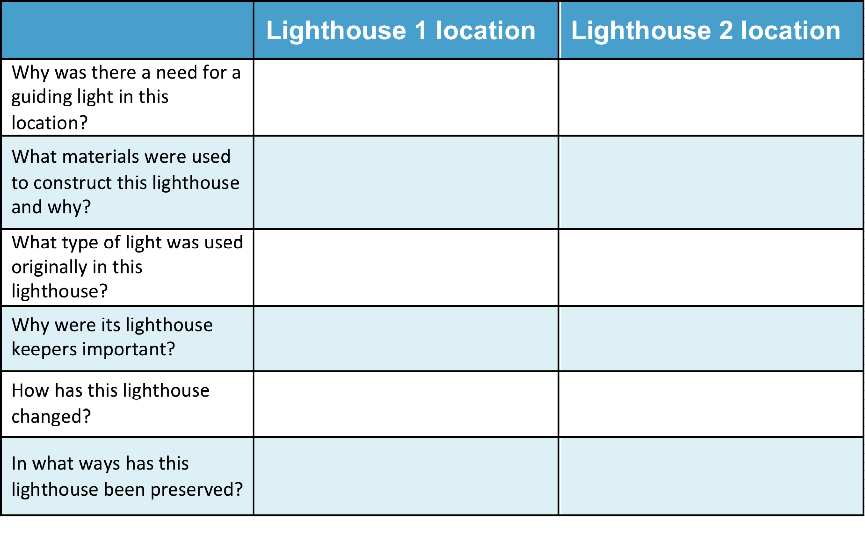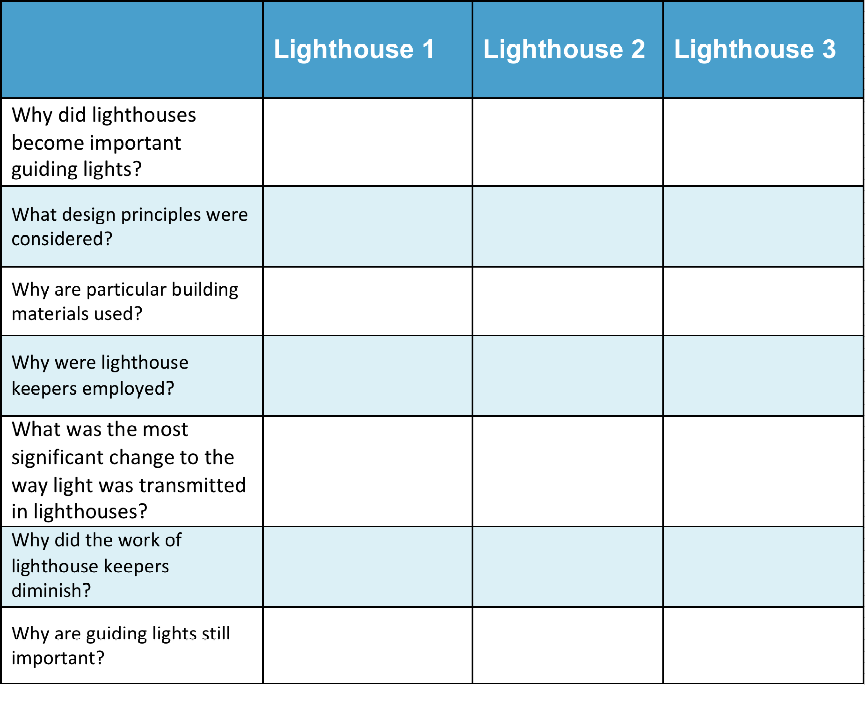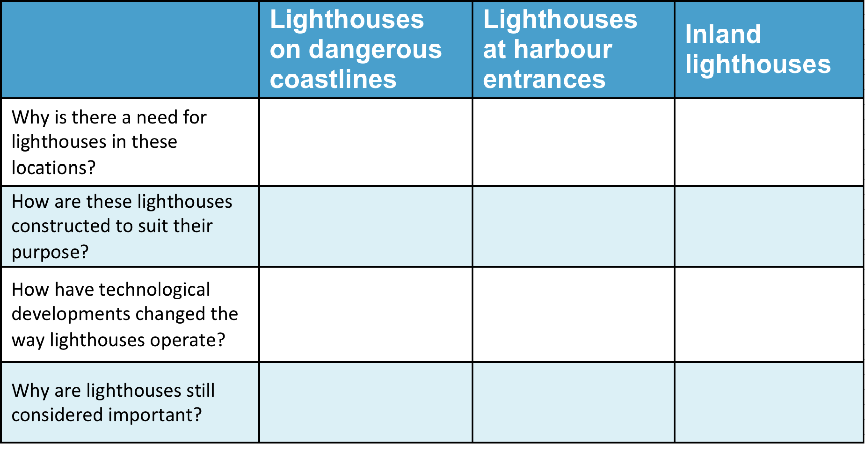Information for Teachers
Curriculum links
Australian Science Standards
PS (ACSSU080) Light from a source forms shadows and can be absorbed, reflected and refracted
PS (ACSSU080) Uses of mirrors in reflecting light
PS (ACSSU080) Refraction of light at the surfaces of different materials
DT (ACTDEK022) The impact of the use of materials, components, tools and equipment can be evaluated
New Zealand Science Achievement Objectives
PW: Trends and relationships in physical phenomena in the areas of mechanics, electricity, heat, light and waves
NS: Working scientifically is complex and involves multiple variables
How to search the internet
1 Keep your request short
Fewer words will give a more accurate search.
2 Choose exactly what you want
For example: Arctic Circle Climate
3 Use quotes
Double quotes around a set of words tell the search engine to consider those exact words in that exact order without any change. For example: “Arctic Circle Climate”
4 Use the plus sign (+)
If you add a plus sign (+) between words, the internet will search for all the words. For example: migrate+birds+whales+mammal
5 Use the minus sign (–) to say what you don’t want
Use a minus sign (–) to show words you do not want to appear in your results. For example: if you search for burrowing animals and do not want mammals in your search, –mammals will exclude mammals. Note that you need to put a space before the minus sign for the word to be excluded.
6 Be very clear about what you don’t want
Part 1
Ask questions and make predictions
After reading Guiding Lights, you may have many questions about why lighthouses have become increasingly important to water navigation.
List your questions
- Compare your list with questions that others have.
- Choose a question you would like to investigate.
- You can work alone, with a partner, or in a small group.
You may want to choose one or more of these questions to investigate
Q1. Why did lighthouses become important guiding lights?
Q2. How are lighthouses constructed to suit their purpose?
Q3. What is the nature of light used in lighthouses?
Q4. How has the technology of light transmission from lighthouses changed over time?
Go to Part 2 Plan and investigate →Part 2
Plan and investigate
Do searches in the internet or in books or talk to people who can help to find the information you are looking for.
Your teacher may suggest suitable websites for further information.
Go to Part 3 Record and analyse data →Part 3
Record and analyse data
Find ways of recording your information that will allow you to see any patterns in the data.
Data Chart for Guiding Lights
(Download and change to suit your information)
 Download Chart
Download Chart
Go to Part 4 Evaluate the information →
Part 4
Evaluate the information
1. Look over the information you have gathered and the patterns you have found.
Why did lighthouses become important guiding lights?
How are lighthouses constructed to suit their purpose?
2. Search for other patterns.
What was similar about the ways in which lighthouse keepers did their work?
How has the technology of light transmission changed over time?
What is being done to preserve some historic lighthouses?
3. Makes notes about what you find.
Go to Part 5 Communicate and share ideas →Part 5
Communicate and share ideas
Look over all of the information that you have gathered in your investigation.
What are the most important ideas about lighthouses as guiding lights?
Make a chart showing the most important ideas.
 Download Chart
Download Chart
 Download Chart
Download Chart
← Return to menu
